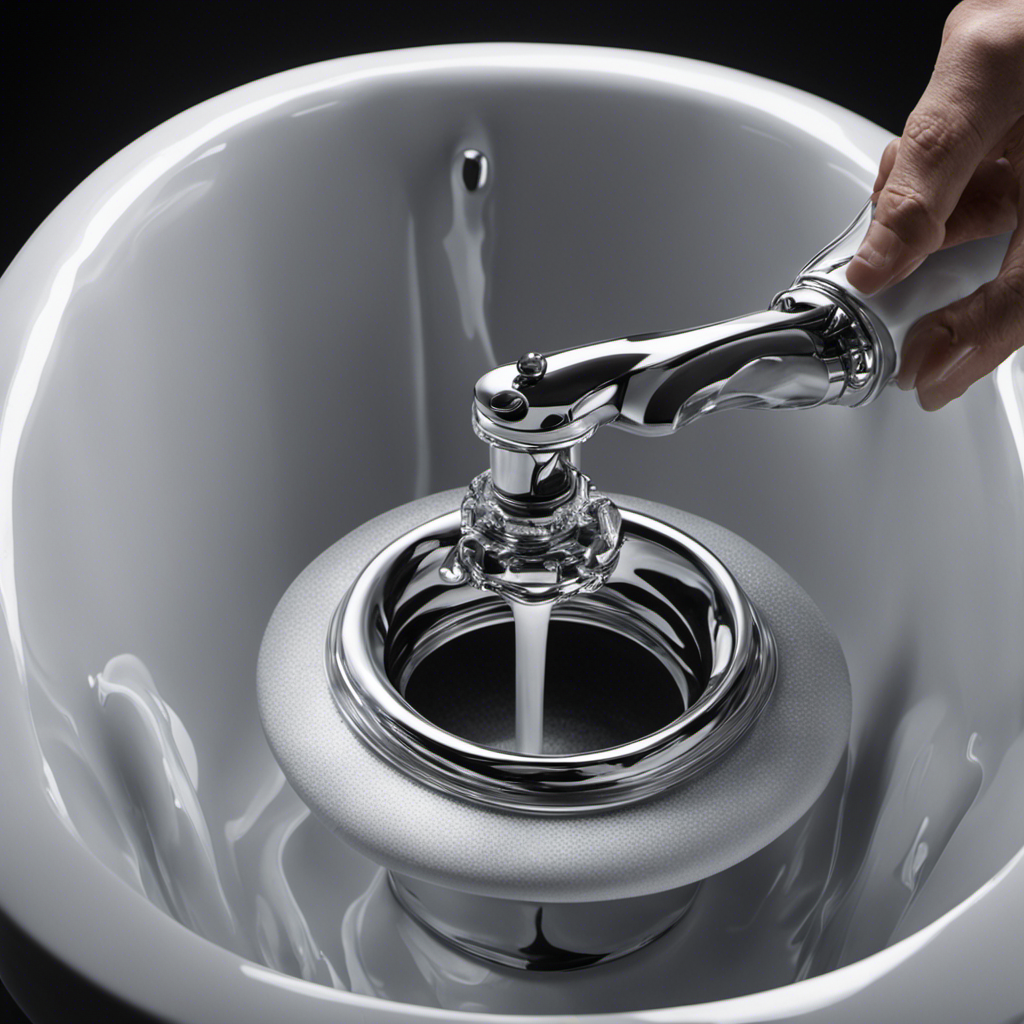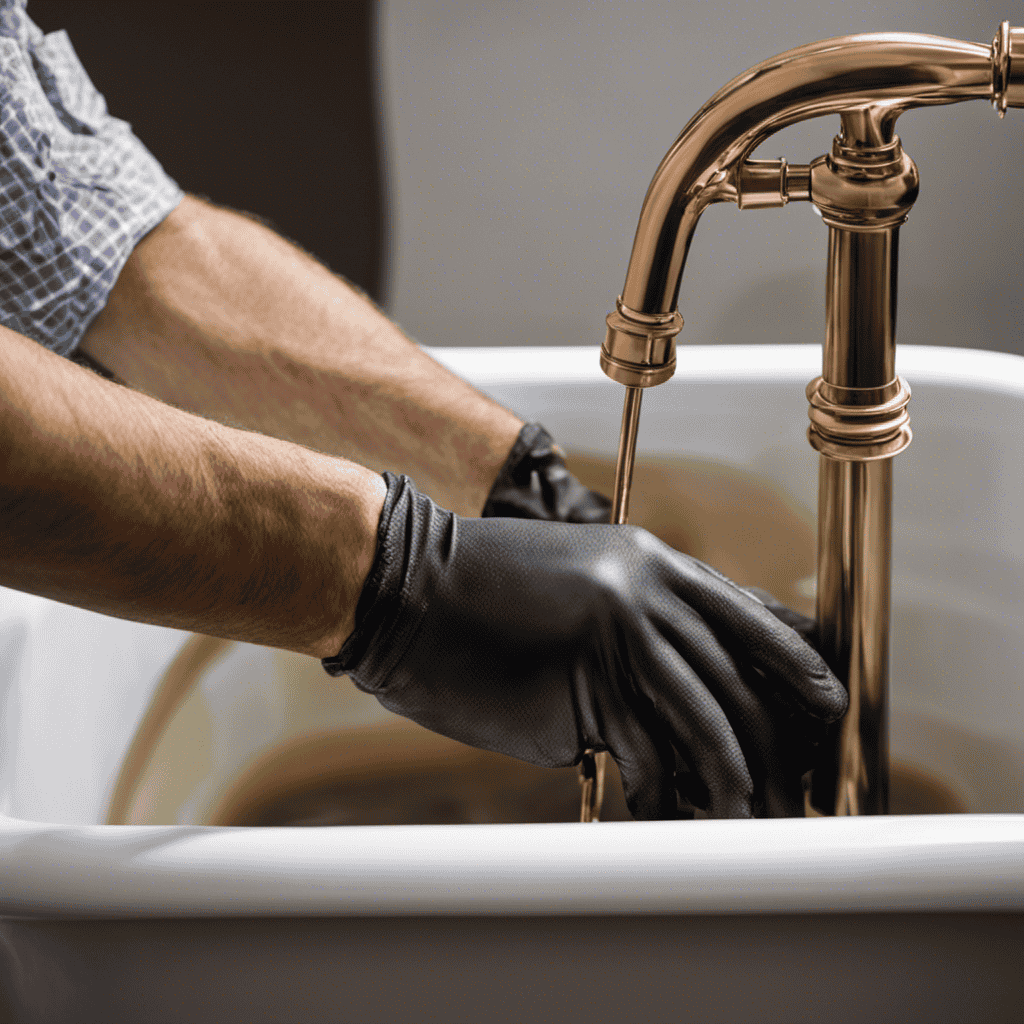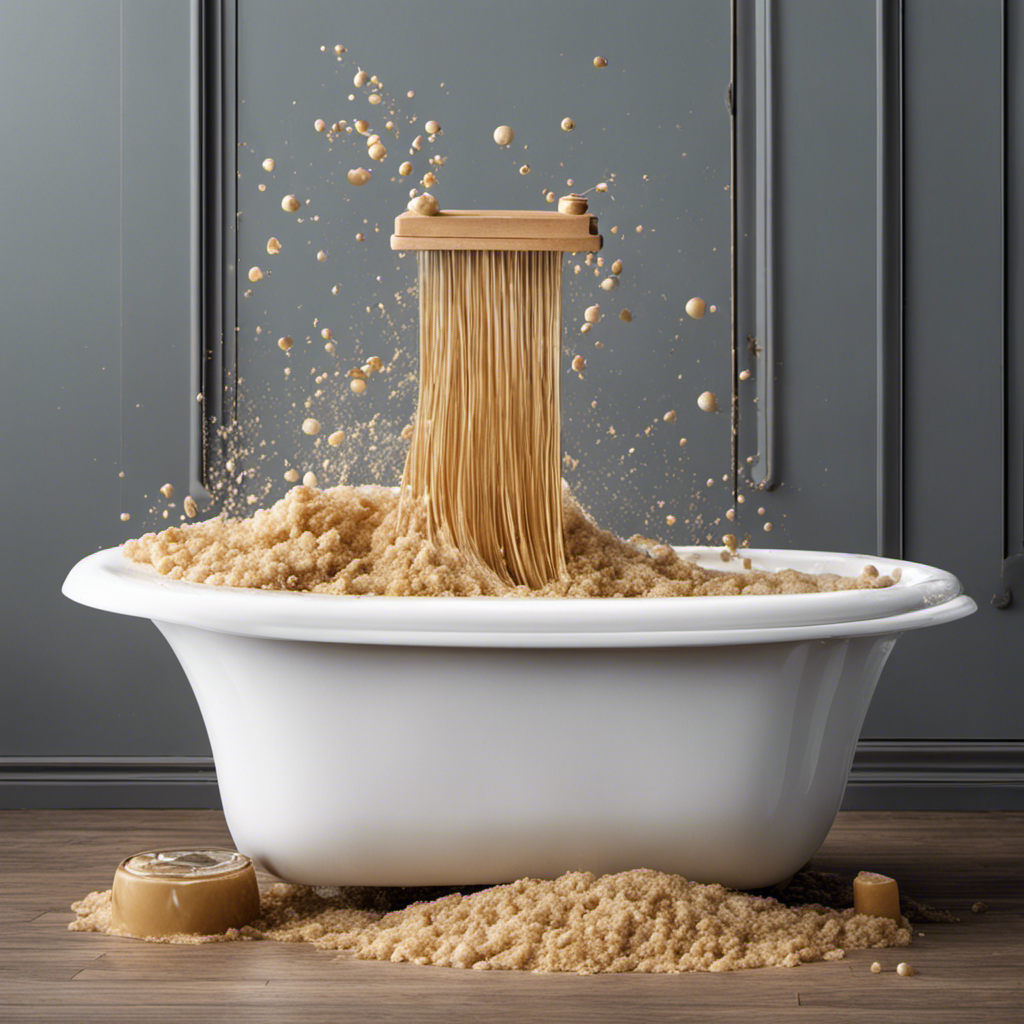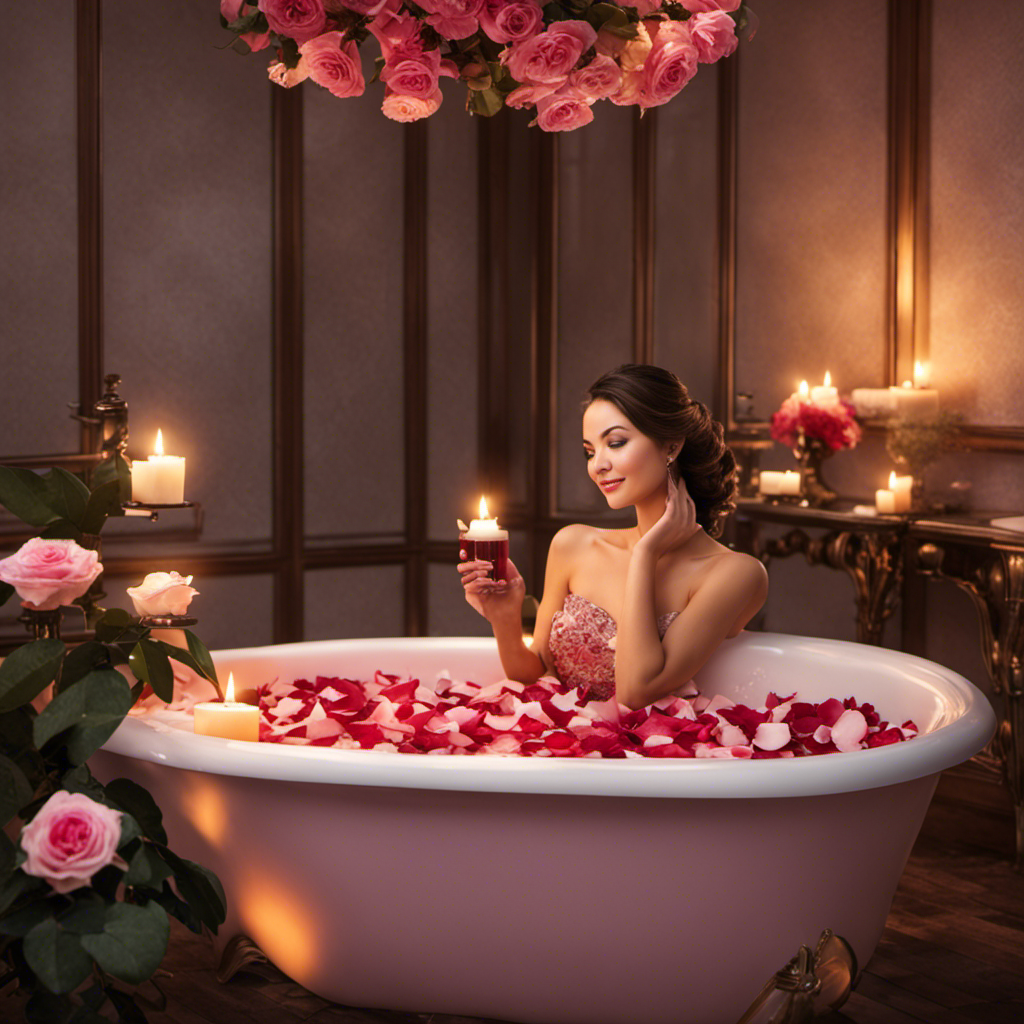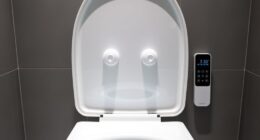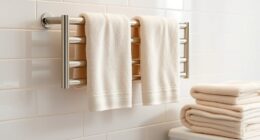I’ll show you how to unplug a bathtub in just a few simple steps.
Trust me, it’s easier than you think. No need to call a plumber or spend a fortune on expensive chemicals.
With the right tools and a little know-how, you’ll have your bathtub draining smoothly in no time.
So let’s roll up our sleeves and get to work, shall we?
Key Takeaways
- Plungers and drain snakes are essential tools for unclogging bathtubs.
- Natural remedies such as baking soda and vinegar can be effective in breaking down clogs.
- Chemical drain cleaners should be used safely and as a last resort.
- Using a drain cover can prevent future bathtub clogs.
Tools Required for Unplugging a Bathtub
You’ll need a plunger and a drain snake to unplug your bathtub. These tools are essential for tackling common bathtub clogs.
There are various bathtub unclogging methods you can try before resorting to professional bathtub unclogging services. A plunger is perfect for removing minor blockages caused by debris or hair. Simply place the plunger over the drain and push and pull vigorously to create suction and dislodge the clog.
For more stubborn clogs, a drain snake can be used. Insert the snake into the drain and rotate it while pushing forward to break up and remove the blockage.
If these methods fail, it may be necessary to seek professional bathtub unclogging services.
Now, let’s move on to the next step of clearing hair and debris from the drain.
Clearing Hair and Debris From the Drain
To remove hair and debris from the drain, start by using a drain snake or a wire hanger. These tools are effective in dislodging and pulling out any clogs that may be blocking the flow of water in your bathtub drain.
Here are some natural remedies for clearing bathtub drains:
-
Baking Soda and Vinegar: Mix equal parts of baking soda and vinegar and pour it down the drain. Let it sit for about 30 minutes, then flush it with hot water. The chemical reaction between the two ingredients helps break down the clog.
-
Hot Water Flush: Boil a pot of water and carefully pour it down the drain. The hot water can melt and dissolve any greasy substances that may be causing the clog.
-
Salt and Baking Soda: Mix equal parts of salt and baking soda and pour it down the drain. Let it sit for a few hours before flushing it with hot water. The abrasive nature of salt and baking soda helps to break down the clog.
Using Chemicals to Remove Clogs in the Bathtub
Using chemicals is another option for removing clogs in the bathtub. While it can be an effective solution, it is important to use chemicals safely to avoid any harm to yourself or the environment. There are also alternative methods that you can try before resorting to chemicals.
| Chemical Option | Safety Precautions | Alternative Methods |
|---|---|---|
| Chemical drain cleaners | Wear gloves and protective eyewear. Avoid inhaling fumes. Follow instructions carefully. | Use a plunger or drain snake to remove the clog. Try using a mixture of baking soda and vinegar. |
| Enzyme-based cleaners | Follow instructions on the label. Avoid contact with skin and eyes. | Use boiling water or a mixture of salt and baking soda. Try using a wet/dry vacuum to suck out the clog. |
| Hydrogen peroxide | Wear gloves and protective eyewear. Avoid inhaling fumes. Dilute with water. | Use a wire hanger or a plumbing snake to break up the clog. Try using a mixture of salt and baking soda. |
Tips for Using a Plunger to Unclog a Bathtub
When using a plunger, make sure to create a tight seal around the drain for maximum effectiveness. Here are some tips to help you successfully unclog your bathtub using a plunger:
- Position the plunger over the drain and press down firmly to create a seal.
- Use quick, forceful plunges to create suction and dislodge the clog.
- Repeat the plunging motion several times, applying steady pressure.
If using a plunger doesn’t work, you may need to consider using a snake to unclog your bathtub. A snake is a flexible tool that can reach deep into the drain to break up and remove stubborn clogs. However, if you’re unsure about using a snake or if the clog persists, it’s best to hire a professional plumber. They have the expertise and specialized equipment to tackle even the most stubborn clogs effectively and safely.
How to Prevent Bathtub Clogs in the Future
One way to avoid future bathtub clogs is by using a drain cover. Preventative measures such as this can save you from the hassle and frustration of dealing with clogged drains.
A drain cover acts as a barrier, preventing hair, soap scum, and other debris from going down the drain and causing blockages. This simple DIY drain maintenance step can be easily implemented by purchasing a drain cover that fits your bathtub’s drain size.
Installing the drain cover is as simple as placing it over the drain and ensuring it fits securely. Regularly cleaning the drain cover and removing any accumulated debris will further enhance its effectiveness in preventing clogs.
Frequently Asked Questions
Is It Safe to Use Chemicals to Remove Clogs in the Bathtub?
Using chemicals to remove clogs in the bathtub may not be safe. There are chemical-free methods for unclogging bathtubs that are effective and don’t pose potential dangers to your health or the environment.
Can I Use a Plunger to Unclog a Bathtub if I Have a Standing Water Issue?
Using a plunger to unclog a bathtub is a common and effective method. It’s quick, easy, and doesn’t require any chemicals. However, if you have a standing water issue, it may not be as effective.
How Often Should I Clear Hair and Debris From the Drain to Prevent Clogs in the Bathtub?
To prevent clogs in the bathtub, it’s important to clear hair and debris from the drain regularly. By doing so, you can avoid potential blockages and the need for more extensive unclogging methods.
Are There Any Specific Types of Plungers That Work Better for Unclogging Bathtubs?
I found that using a flange plunger works best for unclogging bathtubs. It creates a better seal and provides more suction compared to other types of plungers.
What Are Some Natural Alternatives to Using Chemicals to Remove Clogs in the Bathtub?
Natural alternatives and DIY solutions are great options for removing clogs in the bathtub without using chemicals. These methods are effective and environmentally friendly, making them a popular choice for many homeowners.
Conclusion
In conclusion, taking care of a clogged bathtub can be a hassle, but with the right tools and techniques, it can be easily resolved.
By utilizing a plunger or chemicals, you can effectively remove any hair or debris causing the blockage.
Additionally, implementing preventive measures such as using drain screens and regularly cleaning the bathtub can help avoid future clogs.
Remember, maintaining a well-functioning bathtub is essential for a smooth and enjoyable bathing experience.
